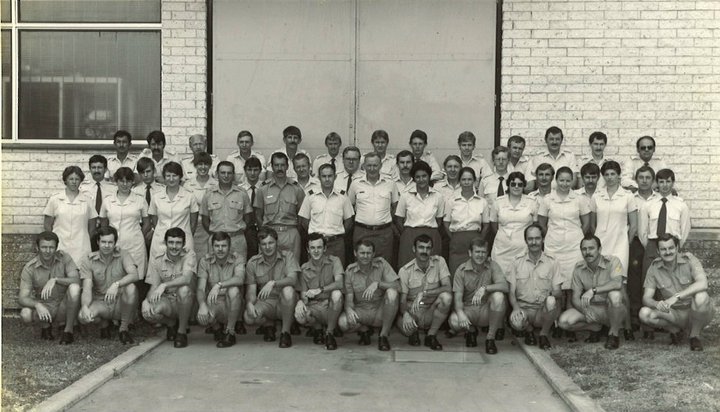|
Radschool Association Magazine - Vol 37 Page 5 |
|
|
Privacy Policy | Editorial Policy | Profit Policy | Join the Association | List of Members | Contact us | Index | Links |
|
|
|
|
|
19th Appy Intake. (Elecos)
The Snails – Passed out from Wagga in June 1967.
|
|
|
|
|
|
|
|
|
Back Row L-R: Geoff Stolberg, Pod Watson, Colin Riley, Trevor Sheehan, Aub Winton. Middle Row L-R: Darryl Trapp, Graeme Oxley, Ron Spink, Peter Schultz, Allan Townsend. Front Row L-R: Jim Thomson, Mick Newman, Barry Prewett, Allan Shaw, Bob McGouglin, Max Patchett.
|
|
|
17 Appy.
In Vols 33 and 34 we had the course photo of 17 Appy – along with the list of names.
Keith Green saw the photos and sent us some more of the troops having a bit of fun. Two of these were taken at the back of the old igloo apprentice quarters in Laverton in 1963 after their initial issue of kit from L Group. The other was taken when 17 (The Ants) were on bivouac.
|
|
|
|
|
|
Keith says after all these years he can’t remember the names, perhaps someone can help.
|
|
|
He can confirm that the ‘well-dressed’ brat at right is Anthony (Tony) Reading who, at the time, had the surname Blythe. |
|
|
|
|
|
|
|
|
|
|
|
The troops in the photo above are, of course, peeling spuds - while on bivouac, but once again, unfortunately, after nearly 50 years Keith can’t remember any names. Can anyone help??
|
|
|
The light turned yellow, just in front of him. He did the right thing, stopping at the crosswalk, even though he could have beaten the red light by accelerating through the intersection. The tailgating woman was furious and honked her horn, screaming in frustration as she missed her chance to get through the intersection, dropping her cell phone and makeup. As she was still in mid-rant, she heard a tap on her window and looked up into the face of a very serious police officer. The officer ordered her to exit her car with her hands up. He took her to the police station where she was searched, fingerprinted, photographed, and placed in a holding cell. After a couple of hours, a policeman approached the cell and opened the door. She was escorted back to the booking desk where the arresting officer was waiting with her personal effects. He said, ''I'm very sorry for this mistake. You see, I pulled up behind your car while you were blowing your horn, flipping off the guy in front of you and cussing a blue streak at him. I noticed the 'What Would Jesus Do' bumper sticker, the 'Choose Life' license plate holder, the 'Follow Me to Sunday-School' bumper sticker, AND the Chrome-plated Christian fish emblem on the trunk, so …………..naturally....I assumed you had stolen the car.''
|
|
|
|
|
|
|
|
|
Products and Services available to Veterans and Current Members of the ADF.
The ADF is recognised as one of the largest employers in Australia. In recognition of Defence’s contribution to the Nation, numerous suppliers of products and services provide tailored products to Defence personnel as a goodwill gesture. A brochure has been prepared which contains products and services that are available to Defence members including, ADF members, Defence civilians and Defence contractors. Some products are available to Retired ADF members and Department of Veterans’ Affairs (DVA) Gold and White Card recipients. Spouses of eligible persons may also take advantage of some products and services.
You can see the full list HERE.
1 Sqn.
|
|
|
(Click the pic for a clearer view)
|
|
|
1 Sqn, which operated the F111 out of Amberley, was
formed at Point Cook in January 1916 and was the first unit formed
under the Australian Flying Corps (AFC) banner. Shortly after
formation, it was shipped off to Egypt to fight in WW1 and
unfortunately was equipped with old and obsolete aircraft (the BE2
below) and allocated a reconnaissance and bombing role.
The photo above was taken in 1984, the CO at the time was Brendan Roberts.
1 Sqn was the home of many of the pioneers of Australian aviation. These included Lieutenant Lawrence Wackett - a founding member of the Australian aircraft industry; Captain Ross Smith - a brilliant aviator who, in 1919, with his brother Keith, would become the first pilot to fly from England to Australia; Lieutenant Hudson Fysh - one of the founders of QANTAS; and Captain Richard Williams, regarded as the father of the Royal Australian Air Force.
At the start
of WW2, it was equipped with Beaufort bombers and in January 1945,
just prior to the end of the war, it was re-equipped with Mosquito
aircraft. It disbanded in August
After much selection controversy, in June 1973 it received its first F-111 and 35 years later, in October 2008, it flew its last F111 sortie and became the first Squadron outside of the USA to be a designated F/A-18F Super Hornet operator.
Now that the F111 has been retired, a wonderful book, titled “From Controversy to Cutting Edge” has been written about the aircraft by Mark Lax. If you worked on the aircraft, this book will definitely interest you. The F-111 was unique among the aircraft that the Royal Australian Air Force operated throughout its history. Never before has one type had such a profound impact not only on the RAAF, but upon Australia’s strategic policy outlook.
From the moment it was ordered, the F-111 was shrouded in controversy. Cost blow-outs, delivery delays, technical problems and an undeserved poor reputation meant that the aircraft’s place in the frontline of Australia’s defence was continually challenged. Despite the barbs, the aircraft survived to fly in Australia for nearly 40 years—a clear testimony to the skill and dedication of the men and women who flew, maintained and supplied it.
Contenders for the strike/bomber asset and replacement of the
Canberra for the RAAF were: (Click the pic at right for a better view)
Now, as this amazing aircraft has finally departed from service, its story has finally been told with full access to the range of official records regarding its acquisition and operation. The politics spanning fifty years of air force history, the controversies, and that media drama, have all been faithfully and unflinchingly described.
Loved by the public, decried by armchair strategists, the F-111 has at last found its place in Australia’s rich military history.
You can get it from the RAAF’s Air Power Development Centre HERE and there is some interesting info on the F111 HERE.
|
|
|
RAAF Laverton 1934 - Morning Inspection
Bristol Bulldog Fighters of No 1 Fighter Squadron with Officer and Ground Crew
|
|
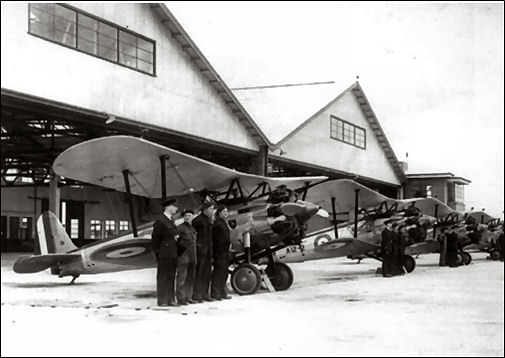 |
|
|
An antique is something your grandmother bought, your mother threw out, and you are now buying back.
|
|
|
113 RTC, 1979
Rod Jenkinson, right, sent us these these photos of 113 RTC.
|
|
|
|
|
|
|
|
|
Back Row L-R: Llewellyn Jenkins; Lee Thornton; Bob Freschi; Peter Hurley; Dave Radovanovic; Grant Jeffrey. Middle Row L-R: Chris Hayes; John Buchanan; Nick Lucas; Eron Clarey; Bryan Cook; Alan Baker. Front Row L-R: Wayne Petzke; Phillip (Lyle) Spann; Rod Jenkinson; Nic Delfos; Richard Hooper; Neil Hancock; Kerry Robinson
|
|
|
The Photo below was taken when 113 RTC groundies went on a Bivouac with a Comms Op course, practicing communications in a bush camp setting. Rod can’t remember any of the names in the front row, it was, he says, over 30 years ago.
If you can help, let us know.
|
|
|
|
|
|
Back Row L-R: John Buchanan, Alan Baker, Eron Clarey, Bob Freschi, Lyle Spann, Rod Jenkinson, Dave Radovanovic, Wayne Petzke, Lee Thronton, Neil Hancock, Llewellyn Jenkins. Front Row L-R: Not known, Not known, Not known, Liz ?, Not known, Not known, Not known, Not known, Not known, Margaret Holmes, Helen Tinney, Deborah Maklin.
|
|
|
|
|
|
Base Sqn Amberley (Comms) 1984.
Back then Base Radio included the ground comms/tells/sigs guys and gals up in the "Comms Center" and all the Radio tech 'G' lads and Admin staff in the control tower but not the Air Traffic Control staff.
Marcel says he can't remember the occasion, but we were told to be in uniform not our ovary-bags
|
|
|
|
|
|
|
|
|
Karaoke is Japanese for "tone deaf".
|
|
Back Go to page: 1 2 3 4 5 6 7 8 9 10 11 12 13 14 15 16 17 18 19 20 Forward
|
|
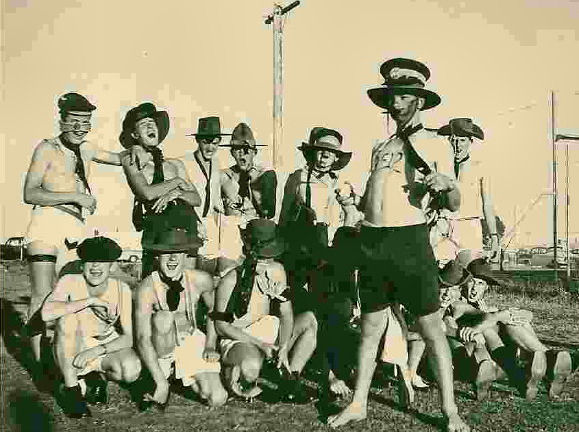
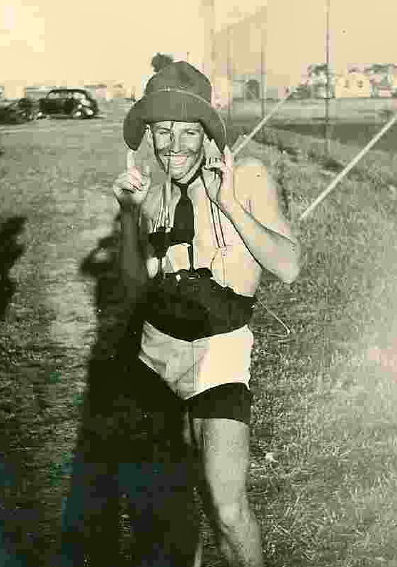
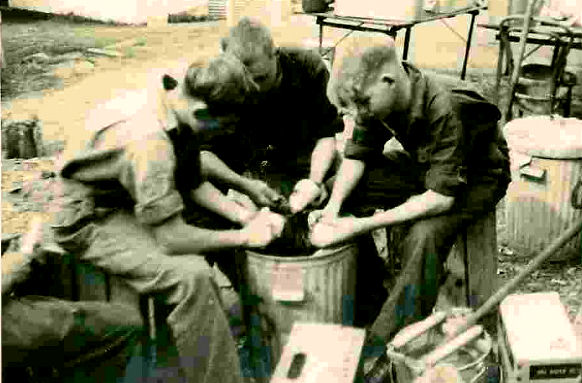
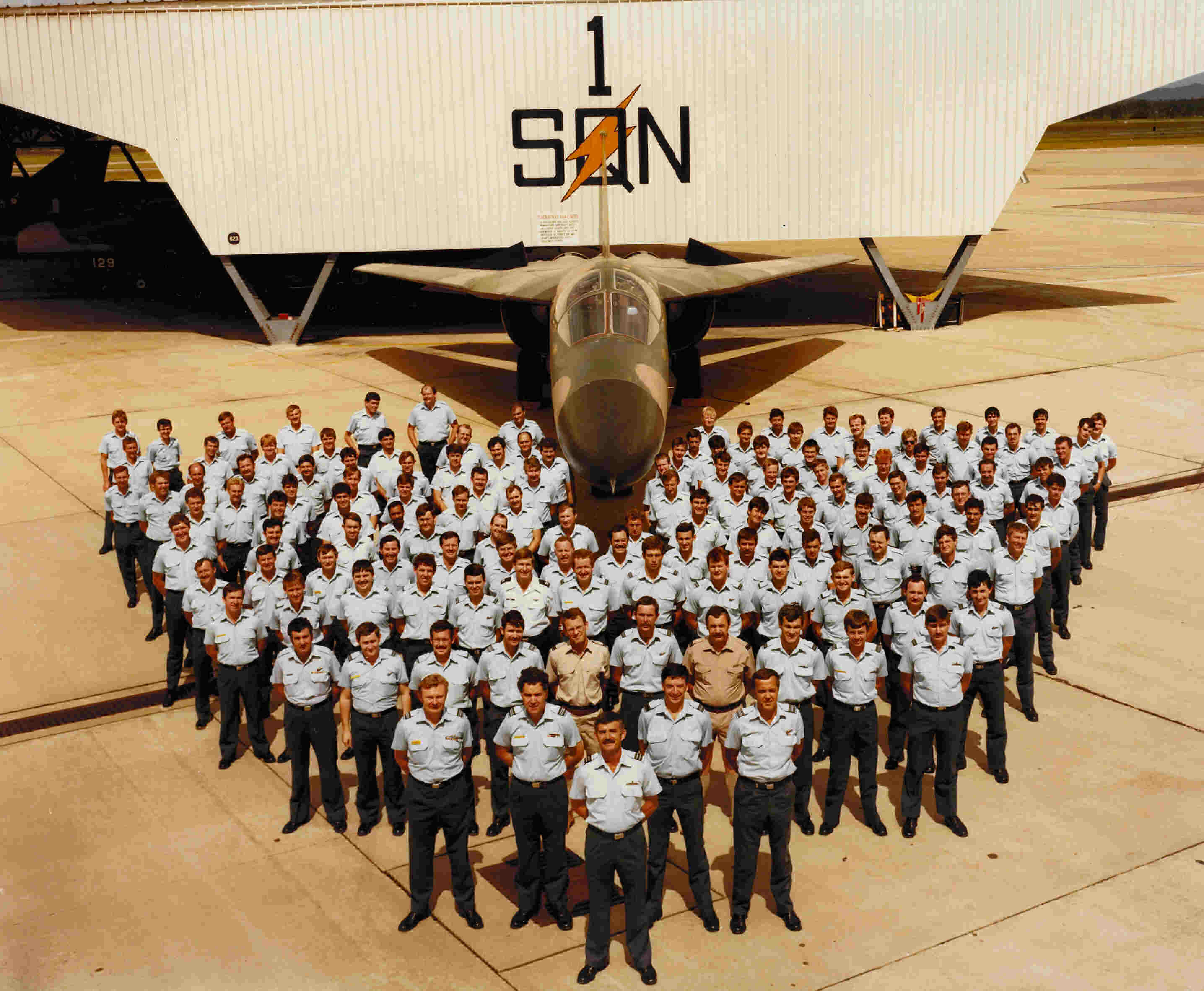
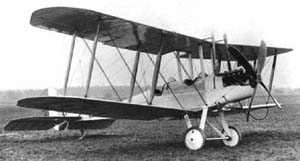
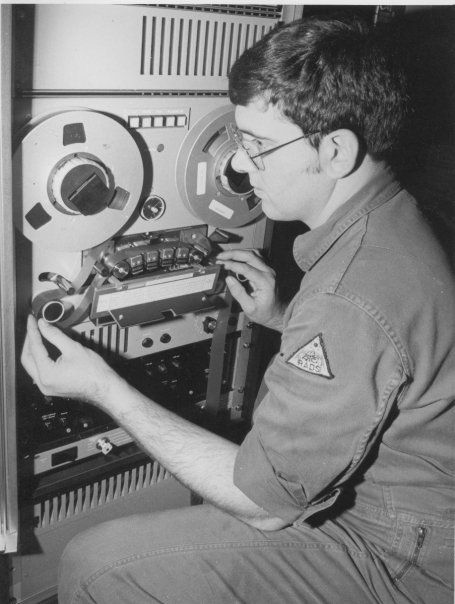
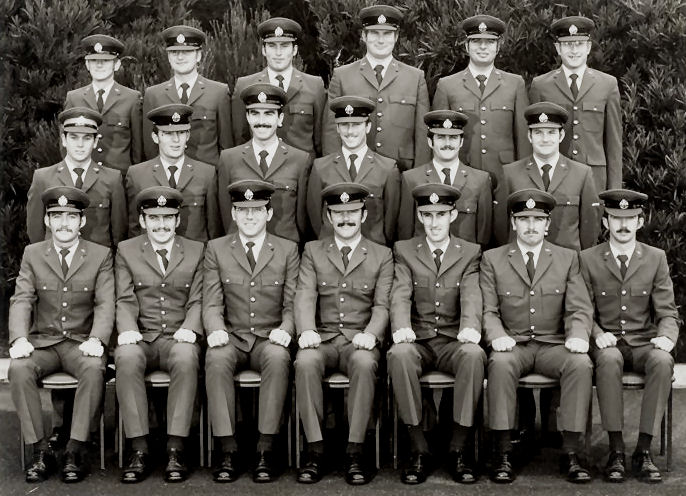
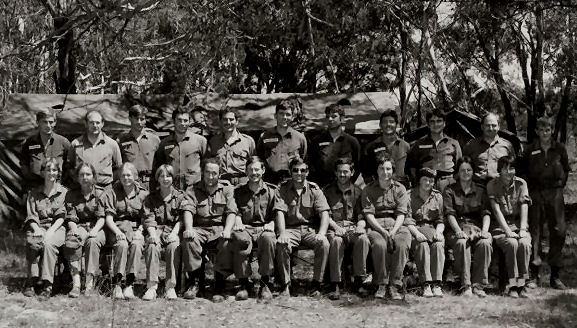
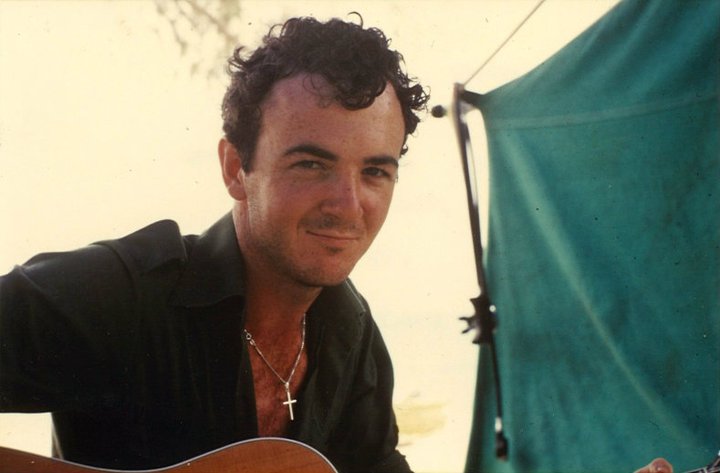 Marcel
Van der Linden (right) gave us the pic below, he says it was taken
Marcel
Van der Linden (right) gave us the pic below, he says it was taken
